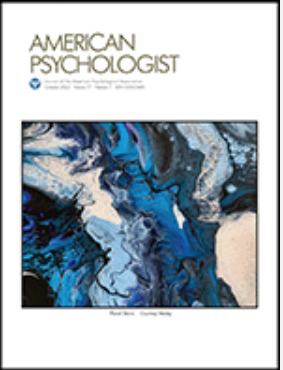Cross-category attentional biases driven by visual mental imagery of social cues.
IF 12.3
1区 心理学
Q1 PSYCHOLOGY, MULTIDISCIPLINARY
引用次数: 0
Abstract
In cluttered and complex natural scenes, selective attention enables the visual system to prioritize relevant information. This process is guided not only by perceptual cues but also by imagined ones. The current research extends the imagery-induced attentional bias to the unconscious level and reveals its cross-category applicability between different social cues (e.g., eye gaze and biological motion). Using a visual imagery task combined with an attentional bias paradigm, we showed that imagining a gaze cue biased selective attention toward the imagery-matching eye gaze. Removing the imagery task obliterated the attentional effect, emphasizing the pivotal role of mental imagery in driving the observed results. Furthermore, the attentional bias persisted even when the physically presented eye gazes were rendered invisible, suggesting the automaticity of the effect and a dissociation between attention and consciousness. When the imagery content involved biological motion cues, cross-categorical attentional bias toward imagery-matching eye gaze was evident. However, this cross-categorical effect did not extend to nonsocial arrow cues-imagining an arrow cue failed to bias attention toward imagery-matching eye gaze, though arrow cues induced within-categorical attentional biases for imagery-matching arrows. These findings point to the existence of shared mechanisms dedicated to processing different social cues rather than nonsocial cues. Taken together, the present study highlights a novel mechanism through which social cue-based imagery guides spatial attention, which operates independently of visual awareness and is supported by a dedicated social module, shedding light on the intricate interplay between the internal mental representations and the external physical world. (PsycInfo Database Record (c) 2025 APA, all rights reserved).社会线索的视觉心理意象驱动的跨类别注意偏差。
在混乱和复杂的自然场景中,选择性注意使视觉系统能够优先考虑相关信息。这个过程不仅受到知觉线索的引导,也受到想象线索的引导。本研究将图像引起的注意偏向扩展到无意识层面,揭示了图像引起的注意偏向在不同社会线索(如眼睛注视和生物动作)之间的跨类别适用性。通过结合注意偏倚范式的视觉想象任务,我们发现想象凝视线索会使选择性注意偏向与图像匹配的眼睛注视。去除意象任务消除了注意效应,强调了心理意象在推动观察结果中的关键作用。此外,注意偏差甚至在身体呈现的眼睛注视变得不可见时仍然存在,这表明了这种效应的自动性以及注意和意识之间的分离。当图像内容涉及生物运动线索时,跨类别注意倾向于图像匹配的眼睛注视是明显的。然而,这种跨范畴效应并没有延伸到非社会性的箭头线索——想象一个箭头线索并不能使注意力偏向于与图像匹配的眼睛凝视,尽管箭头线索会引起对与图像匹配的箭头的范畴内注意偏差。这些发现表明存在共同的机制,致力于处理不同的社会线索,而不是非社会线索。综上所述,本研究强调了一种新的机制,通过这种机制,基于社会线索的图像引导空间注意力,它独立于视觉意识运作,并由一个专门的社会模块支持,揭示了内部心理表征和外部物理世界之间复杂的相互作用。(PsycInfo Database Record (c) 2025 APA,版权所有)。
本文章由计算机程序翻译,如有差异,请以英文原文为准。
求助全文
约1分钟内获得全文
求助全文
来源期刊

American Psychologist
PSYCHOLOGY, MULTIDISCIPLINARY-
CiteScore
18.50
自引率
1.20%
发文量
145
期刊介绍:
Established in 1946, American Psychologist® is the flagship peer-reviewed scholarly journal of the American Psychological Association. It publishes high-impact papers of broad interest, including empirical reports, meta-analyses, and scholarly reviews, covering psychological science, practice, education, and policy. Articles often address issues of national and international significance within the field of psychology and its relationship to society. Published in an accessible style, contributions in American Psychologist are designed to be understood by both psychologists and the general public.
 求助内容:
求助内容: 应助结果提醒方式:
应助结果提醒方式:


